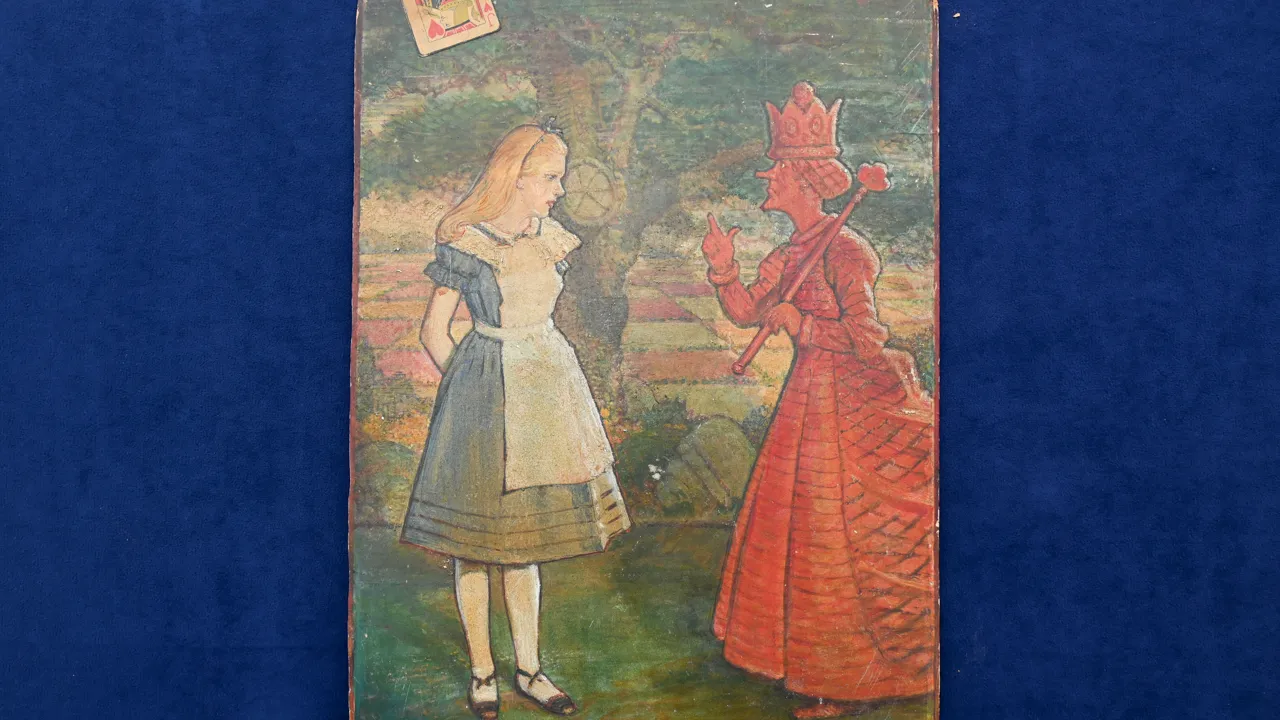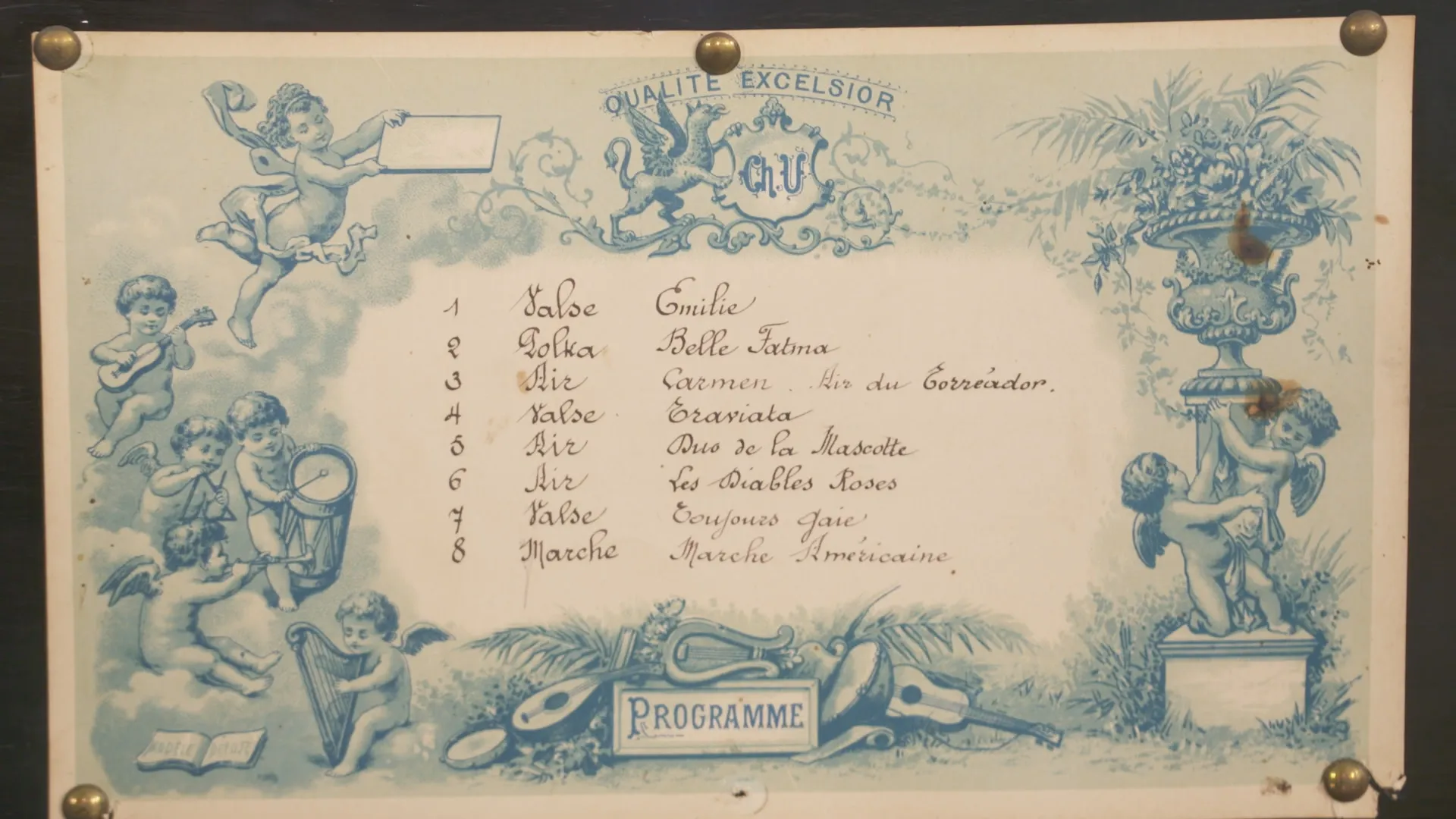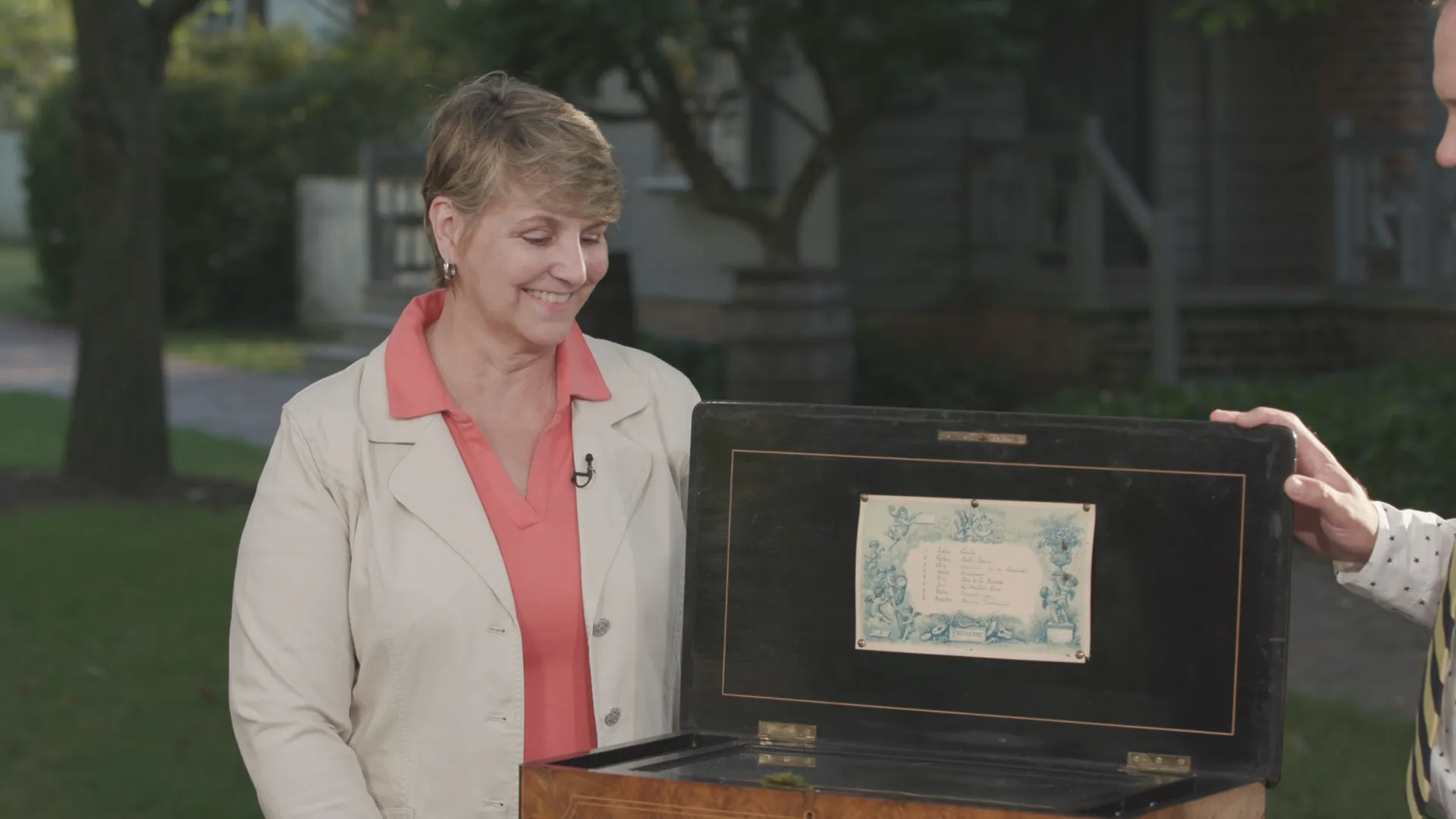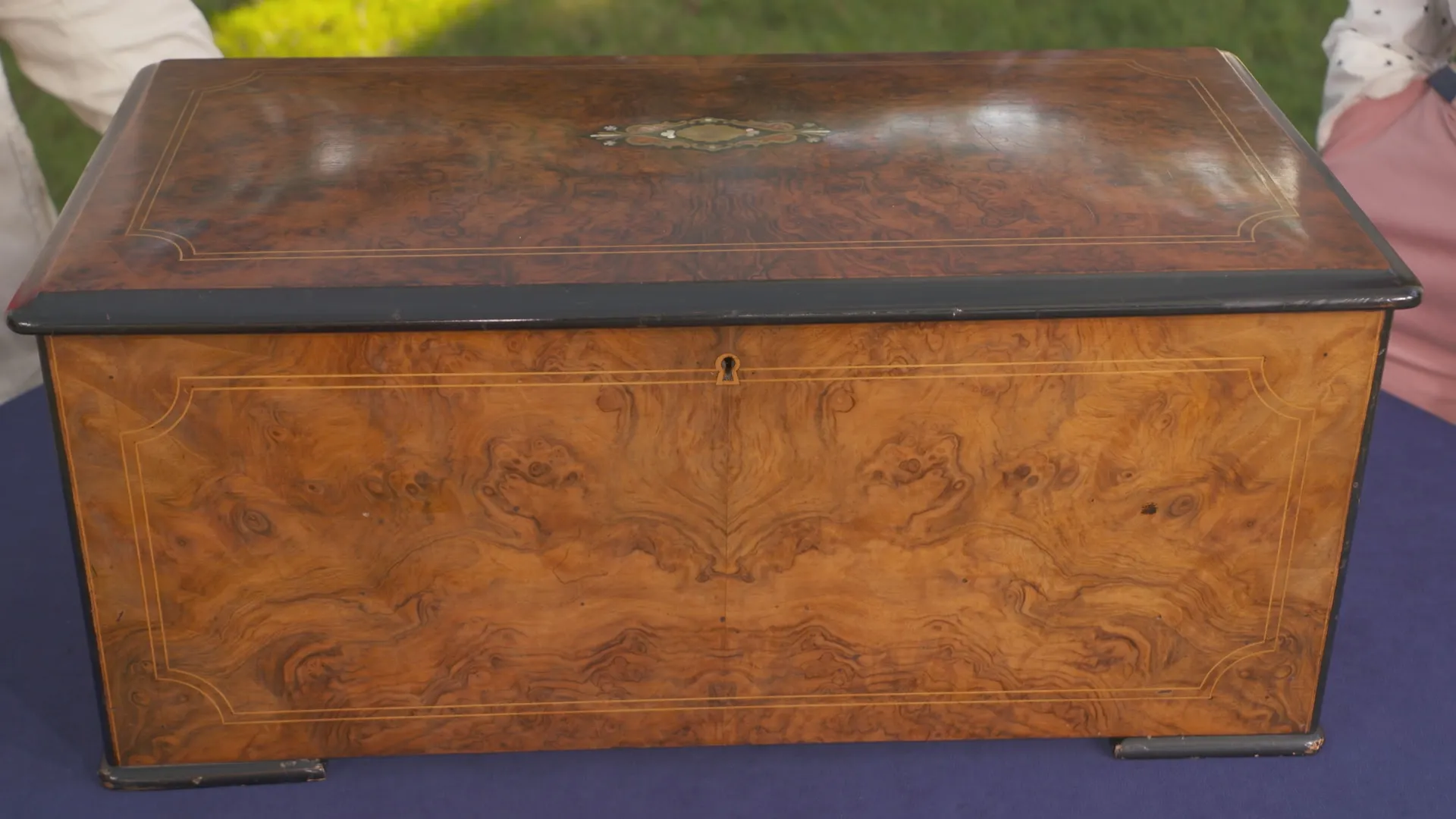GUEST: I brought a music box that's been in my family for a long time. The story I was told was that my grandfather got it at a pawn shop back in the '40s or '50s for his then-daughter-in-law.
APPRAISER: We would refer to this as a cylinder musical box.
GUEST: Okay.
APPRAISER: Typically, musical boxes like this are made in Switzerland, but they're a little tough to date. They variously date between 1850 and 1900.
GUEST: Oh.
APPRAISER: This one is distinguished from most of the musical boxes made during that period by a number of characteristics. First and foremost is the beauty of the wood that's used to make it. The exterior is covered with a burl walnut veneer and inlaid with, with stringing and some other things. But it's really the quality of the grain of the wood that speaks to why this piece is better than a typical musical box of the period.
GUEST: Okay.
APPRAISER: If we, if we open it up, it says on the tune card here that it plays eight different tunes: some airs, some salsas, it looks like a polka, as well. Um, a couple stood out to me, one... One of them is number eight, “Marche Américaine.” There's also a, a possibility, because it has a tune in there called the “Marche Américaine,” that it was actually intended for an American audience. We can't prove that. And the other one here, number five, is an air from the, called the "Duo de la Mascotte." "La Mascotte" was a French opera written in 1880.
GUEST: Okay.
APPRAISER: So we know that this musical box dates to the later part of that range that I talked about before.
GUEST: Okay.
APPRAISER: Let's say the date of this might be around 1880 to 1900. It's also distinguished from other musical boxes, and the most important way it's distinguished is, it has a percussion section. It has some mechanisms inside that play a drum.
GUEST: Right.
APPRAISER: That play six engraved bells. That play a little wooden item over here called the castanets. Those are all things that would have, at the time, been more expensive for a musical box. It is quite literally the bells, but not the whistles. The comb is in particularly good condition. In fact, the, the musical box overall is in very good condition. It works well. It sounds great. It's in a wonderful case. If this were to come to auction, we'd give an auction estimate of $2,000 to $4,000.
GUEST: Wow. Okay. I had no idea. (chuckling) I thought a few hundred dollars.
APPRAISER: Yeah.
GUEST: It's just been in the family forever, so...
APPRAISER: No, it's a lovely example of, of what it is.
GUEST: Yeah, we like it. (chuckles)
ITEM: (playing slow tune)














